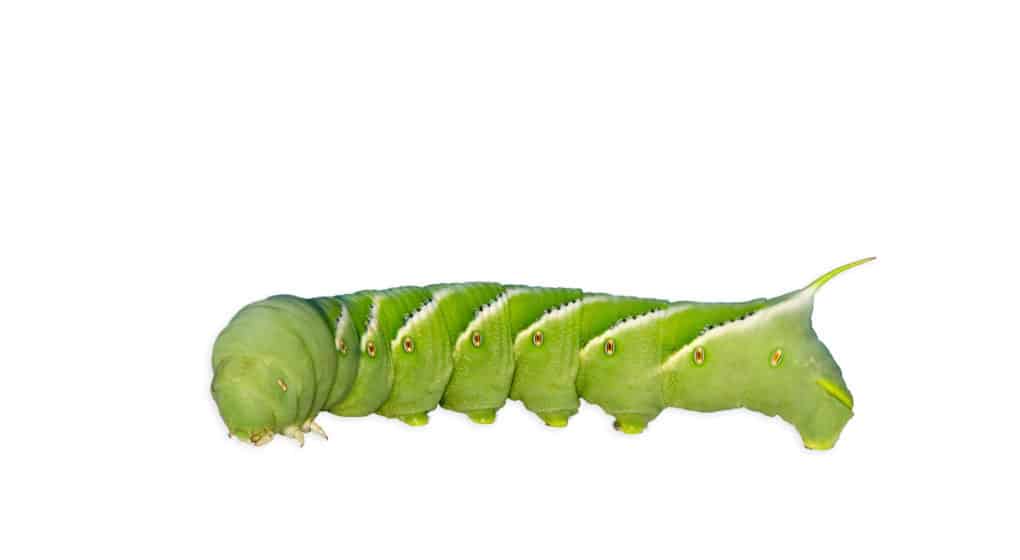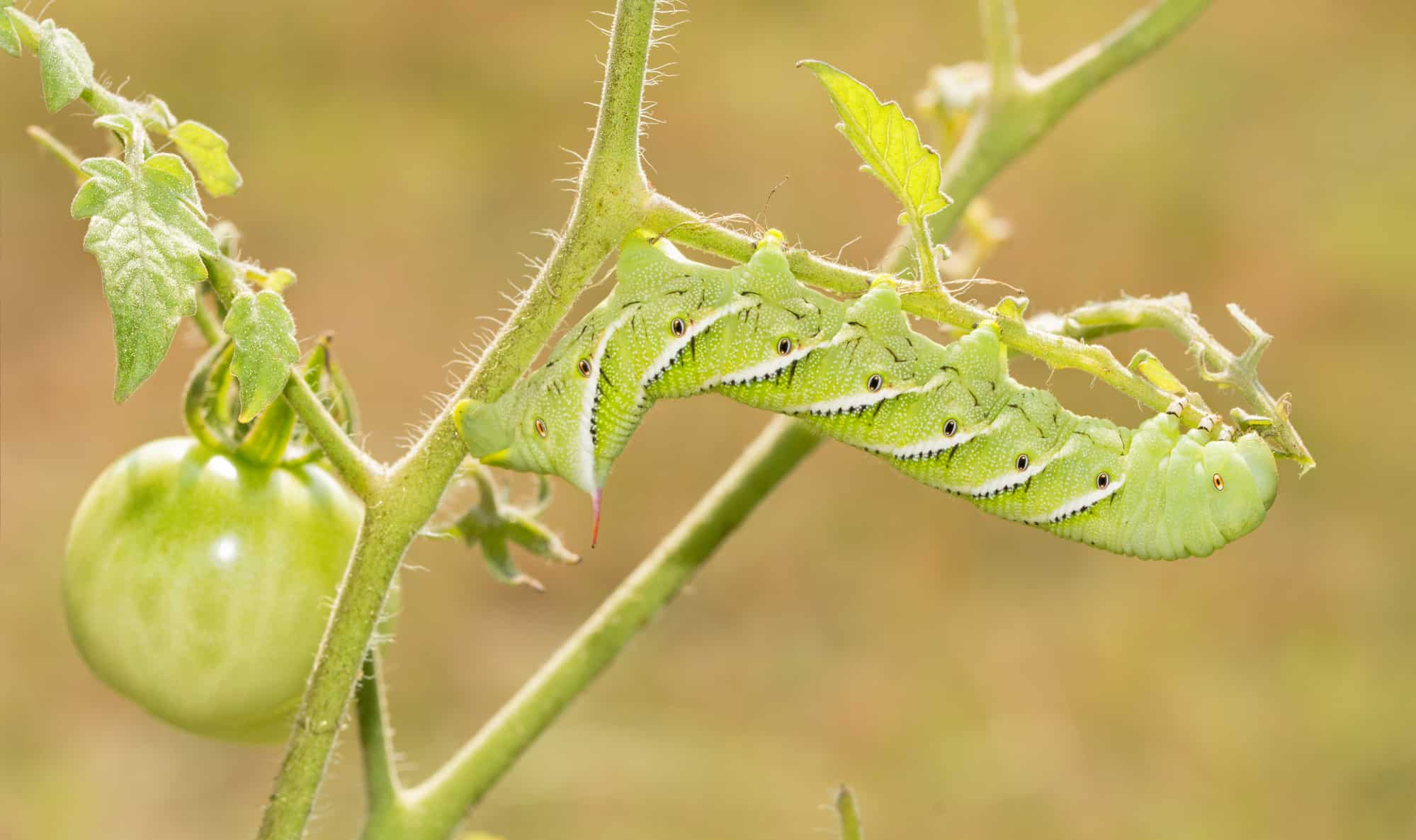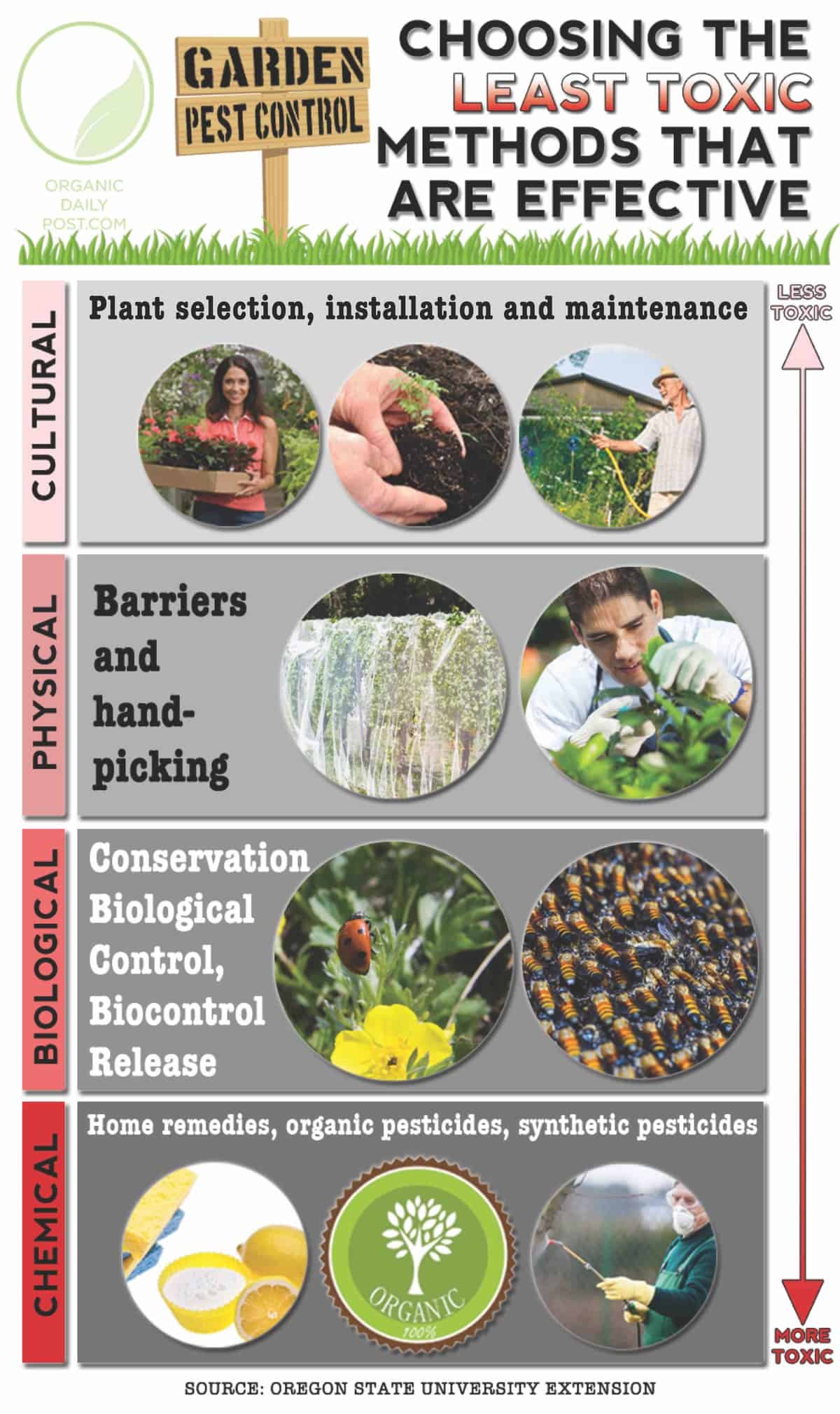
It's tomato growing time, and Organic Daily Post is here to help make sure you enjoy the most beloved fruit in the garden, the tomato. We've gathered up some good information on what to look for when it comes to protecting your tomatoes against tomato hornworms. Read on to learn how to treat these pests if they are discovered trying to ruin your garden.
Tomato Hornworms
If you've ever grown tomatoes, you are likely familiar with that green grinch of the garden, the Tomato Hornworm. The hornworm (Manduca quinquemaculata) is actually the larval stage of the five-spotted hawk moth, also called the sphinx moth, of the family Sphingidae.
These moths are also known as hummingbird moths. Fascinating creatures resembling a hummingbird when mature, they are devastating little monsters as caterpillars. Their name comes from the distinct hook-like horn protruding from their posterior.
Their eggs, laid on the underside of the leaf of their host plant, hatch quickly, usually within four to five days. Once hatched, they are voracious eaters and can strip a plant clean in a very short amount of time. This is why daily inspection of your plants is crucial.
A morning and evening once-over will go a long way toward ensuring your plants don't fall victim to this remorseless invader. Look for eggs on the underside of the leaves and the green caterpillar lying nearly invisible along the stem or underside of the leaf.
All in the Family
The tomato hornworm isn't alone, however. Its cousin, the tobacco hornworm (Manduca sexta), wreaks similar havoc on its plant of choice, tobacco. Both these caterpillars are drawn to plants in the nightshade family such as tomatoes, eggplants, potatoes, tobacco, and green peppers. They pupate underground over the winter months and emerge as moths in the spring to mate. After breeding, the females then lay their eggs on the underside of the leaf to avoid detection.
While quite similar in looks, the tomato and tobacco hornworms are distinguishable from one another. The tomato hornworm sports a set of white, 'V-shaped' markings along its sides and a black horn on its tail end, while the tobacco hornworm displays more elongated vertical white lines with a red colored hook adorning its tail. The hooks are often thought to be stingers but in truth, they are harmless.
Interestingly, these worms are interchangeable when it comes to dining. You may find a tobacco hornworm on a tomato plant and vice versa. Both are terribly destructive and can devastate a crop if undetected for any length of time. After the eggs hatch the caterpillars spend the next four weeks feeding on your plants until reaching maturity, at which time they drop back into the ground to pupate.
I See You... or Do I?
Hornworms are masters of camouflage. These vine colored caterpillars, found living and dining on tomato plants, aren't easy to spot at a glance. Their near-perfect color match of your tomato vines isn't by accident, it is an excellent disguise. You really have to look carefully to see them. Once you do, it's almost an aha moment. Now you know what to look for!
Where leaves begin to droop or vines appear stripped of their leaves in areas it's a safe bet you have, or have had, hornworms eating on your plant. Take the time to look your plants over thoroughly. These worms can defoliate a plant in short order. Careful scrutiny can make the difference between havoc or harvest.
Natural Pest Control
I see one... now what? Now that you've spotted one and know what to look for, it's time to take action. The gardener has several options available to them when it comes to ridding the garden of hornworms. There are natural methods of effectively dealing with them requiring no pesticides or insecticides. For the more natural gardener, the following options make the most sense.
The fastest and most natural way to rid your plant(s) of tomato hornworms is pretty much the hands-on/bugs-off approach. It is as simple as it sounds. You manually pluck the hornworm off your plants with gloved fingers or by using a pair of tweezers to remove him. Once removed, you can drop the little invader into a container of water which will drown him, or simply drop him to the ground and do your best Bigfoot impression.
To deter these and other invaders from dining on your tomatoes, you can make up a solution consisting of dish soap, water, and cayenne pepper. Spray your plants down with this formula. There is no set portion, just make the water somewhat soapy and sprinkle in some cayenne powder. Moths are repelled by the smell and taste of this solution and will go elsewhere for their meal.
No worries, this tincture won't hurt your plants but will dissuade hornworms and other uninvited diners from dropping in. Should it rain or get washed off, simply reapply.
Sheets of plastic liner placed on your garden floor will help prevent the moth larvae from breaking through the ground and heading straight for your tomatoes for lunch.
Not That One!
Should you spot a hornworm with a bevy of white eggs attached to its back, leave it alone. Those eggs are not the eggs of the hornworm but of a parasitic wasp (Braconid Wasp) that lays its eggs on the back of the caterpillar. When those eggs hatch it's role reversal.
The wasp larvae become the diners and the worm becomes the meal. Moreover, you will soon have a little army of wasps (harmless to people) that feed on the tomato/tobacco hornworm and will help defend your garden against other insect invaders as well.
Additionally, if your neck of the woods includes birds such as robins and mockingbirds, you're in luck. Those particular birds are good at spotting hornworms and removing them. However, don't rely solely on them because they have plenty of other insects on which they dine, but having them around is a plus.
More Natural Pest Control
Other methods used to fight these invaders include the use of chemicals - but good ones, designed specifically to fight hornworms. For a serious infestation, you may need to bring out the big guns. Bacillus thuringiensis or BT is a soil-dwelling bacterium used to control hornworms and can be readily purchased at garden centers.
Totally harmless to vegetation, this natural solution is sprayed directly onto tomato plants. When a hornworm consumes a leaf treated with BT, the caterpillar loses his appetite and literally starves to death. Begin treatment early or at the first sign of invasion.
The End
So there you have it! You now know not only what to look for on your tomato plants but how to treat the problem naturally. Preventive measures go a long way toward a happy and healthy tomato harvest. You can now go from a green worm to a green thumb with just a little help from Nature.
Happy Harvest!




